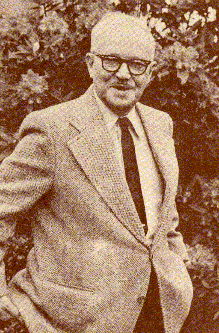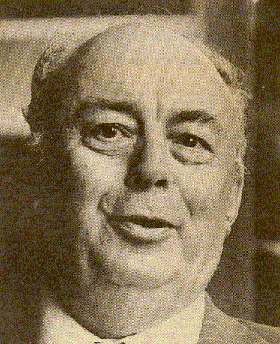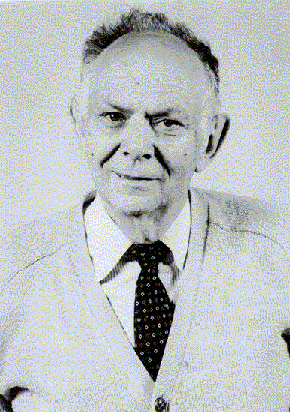| The Creation of Bernoulli Society - I |
Three rather independent groups have been involved before the conception of the Bernoulli Society. There was first the International Association for Statistics in the Physical Sciences, IASPS for short. This society was linked to the International Statistical Institute and should be viewed as the main predecessor of our current Bernoulli Society. Then there was a link with the Institute of Mathematical Statistics through its former European Regional Committee. Finally, from a totally different and independent direction came the Committee for Conferences on Stochastic Processes.
In what follows, I will sketch the role that has been played by each one of these three groups. In a nutshell, on 10 June 1975 IASPS legally adopted the two other committees as daughters and renamed itself Bernoulli Society. But before doing that, let me quickly survey what has happened since the creation of the Bernoulli Society.
A first newborn showed up almost instantaneously. At the Warsaw ISI-session in August 1975, the Bernoulli Society Council decided that a subject-area Committee for Statistics in the Physical Sciences (CSPS) should be created. The committee had to take up the special responsibility for statistics in the physical sciences, which, by the transition of IASPS into the Bernoulli Society, might disappear. ASA Director F.C. Leone was appointed as chair and he was asked to set up the committee. In its initial period, the committee was rather active till about 1980. Activities then slowed down to return with full vigour around 1990.
Two regional committees were added in 1980. For the first of them, the conceptual scene was the 41-st Session of the International Statistical Institute in Delhi in 1977. It was President Klaus Krickeberg who took the initiative by meeting with delegates from Venezuela, Cuba and Mexico and to suggest the creation of a regional structure to accommodate for the scientific needs of Latin-American probabilists and statisticians. The inauguration took place on 24 March 1980 at a first Symposium on Probability and Mathematical Statistics, held at the Universidad Simon Bolivar in Caracas, Venezuela with Enrique Cabaņa as first chairman. This regional committee has never ceased to remain remarkably active, for example by organizing the CLAPEM biennial meetings but also in many other ways. The participation of a large number of people from the Latin-American region at the Fifth World Congress in Guanajuato has been gratifying and encouraging.
The next committee was conceived during the Bernoulli Council meeting in Canberra, July 1978. It again was President Klaus Krickeberg who now asked David Vere-Jones to investigate the possibility of setting up a committee for the East-Asian region. Geographically, this region was broadly interpreted as the triangle bordered by India in the West, China and Japan in the North, Australia and New-Zealand in the South-East. At first, it appeared that the interest in a regional committee was limited to India, Australia and Japan, where there already was a well-established tradition in statistical activities. Other countries like Singapore, Hong Kong, New Zealand, Malaysia and the Philippines were much less enthusiastic. Also, the interest in a regional committee only came from the academic side while most statisticians from the region were employed in governmental offices. Nevertheless, the inaugural meeting of the East Asian and Pacific Regional Committee of the Bernoulli Society took place on 29 August 1980 during the Fifth Australian Statistical Conference in Sydney, organised by Chris Heyde. Also this committee went through a period of inertia but it revived under the baton of Louis Chen, past-president of the society.
The most recent addition to the Bernoulli Society is the Committee on Probability and Statistics in Biological Sciences that will soon become active.
For each of these committees and for other aspects of the society's history like membership, publications, statutes, etc. I have collected information in separate files. All of them will be made available to all those interested.
The creation of the Bernoulli Society twenty five years ago, has been made possible thanks to the efforts of a number of individuals. However, I would like to single out the role played by three of them, i.e. Jerzy Neyman, Henri Theil and Julian Keilson. I don't think that they ever physically met on the same location. Still, the three together have been responsible for the ingredients that made up the Bernoulli Society. I would like to call them the grandfathers of the society.
I will introduce these three scholars through their Bernoulli relevance and in an historic perspective. Then I'll tell you how the three resulting groups have been amalgamated into what is currently called the Bernoulli Society.
Having noted the recent marked development and fruitfulness of statistical applications to the physical sciences, and
Considering the need for a more systematic study of statistical problems raised by these applications,
Decides to establish, in accordance with Subsection 306 of the Statutes, a Committee on Statistics in Physical Sciences for the purpose
(i) to delineate the more fruitful fields of application of statistics to physical sciences and
(ii) to recommend steps to be taken in order to promote new development in these fields,
Calls for nomination of charter members of the Committee.

Jerzy Neyman
In the subsequent discussion, Sir Ronald Fisher challenges the phrase physical sciences while Livio Livi fears the total disintegration of ISI when such a committee would be formed. Among the audience, there is strong support from people like Mahalanobis, Tippett and van Dantzig. After a long discussion, ISI-President Georges Darmois, asks the General Assembly to vote on the proposal that ISI should take up the activities mentioned in the resolution. The proposal is accepted unanimously by all 63 voters. Now something interesting happens: Neyman inquired whether the chairman's proposal implied that the resolution itself was accepted and that a committee could be formed. Seemingly not, as one needed another lengthy ISI discussion. Finally the resolution itself has been adopted with 37 for, 3 abstentions and 17 votes against. A Committee for Statistics in the Physical Sciences was then established. This committee turned into the International Association for Statistics in the Physical Sciences IASPS during the 33rd ISI session in Paris in 1961. ISI members who expressed the wish to join the new association were called founder members. They were instructed to elect the first officers and the first council.
Here is the list of the successive presidents of IASPS.
The association increased its membership from an original 80 founding fathers to 350 at the time of the transition into the Bernoulli Society. An increasing number of meetings was organized and sponsored. Here is a very short selection from the many, many meetings in which IASPS has been involved over the period 1972-74 only.
There is something remarkable in this list as it convincingly shows that it became increasingly difficult for IASPS to constrain its activities purely to the physical sciences. Many other applications of stochastic thinking suggested the creation of an opening to the universal nature of the methodology. Gradually pressure developed within the society for a revision of the statutes that would reflect the broader range of interests. As I will show a bit later, it was the sixth president of IASPS, David Kendall, who geared his society into this broader assignment.
The idea of creating a European regional group of statisticians arose at a meeting between Henri Theil and Jim Durbin at Harvard in April 1960. Theil, who was President of the Econometric Society (ES) at the time, told Durbin that he wanted to attract more statisticians to the annual regional meetings of the ES. Durbin said that the best way to do this would be to set up a regional group of statisticians in Europe and organise joint meetings between it and the ES. They decided to go ahead and Theil agreed to approach the ISI to establish such a group under its aegis on his return to the Netherlands, while Durbin agreed to approach George Nicholson, who was secretary of the IMS, about the possibility of establishing it under the IMS.

Henri Theil
Ultimately, ISI turned down the proposal but IMS accepted it. At a meeting of the IMS Council at Stanford in August 1960 under President Erich Lehmann, it was decided to establish a European Regional Committee of the IMS. With this decision IMS indicated its desire to play a more important role on the international scene. The creation of the European Regional Committee had a strong influence on IMS because from that time on, IMS made a major effort to be sure that all of its principal committees, Editorial Boards and even Nominating Committees had substantial representations outside of North America.
Soon after the creation of the European Regional Committee, there was a conflict between Theil and IMS President Bowker that resulted in the resignation of Theil as chair. Theil was succeeded by Anders Hald who successfully guided the brand new committee through the next three, four years. Roy Geary of the Dublin Economic Research Institute invited the committee to hold its first meeting, jointly with the Econometric Society and TIMS in Dublin in 1962 and some 300 participants turned up at this first European meeting. Here is a list of the chairmen prior to the transition of the committee into the Bernoulli Society.

Anders Hald
In its report to the Council of IMS in 1969, the European Regional Committee complained that it was too much dominated by IMS. This feeling seems to have been voiced at other IMS meetings both in Europe and in US. In the late sixties, the aggravation of the situation in Vietnam might have been partly responsible for the anti-US feelings that became more and more apparent, particularly among British statisticians. Also the impossibility to involve Soviet statisticians in European activities was seen as a drawback to the US controlled European Regional Committee. One has to understand these resentments against IMS within their historic context. For example, the fact that the President of IMS appointed the members of the European Committee rather than having them elected by the European statisticians at large, caused uneasiness. On the other hand no IMS influence had ever been experienced on the scientific programmes of meetings and no financial support has been provided by IMS.
The continuation of the European meetings also caused a major headache. There was a tendency within the European Regional Committee that the next organiser of a European meeting would automatically become the next chairman of the committee. It is not hard to imagine that this arrangement did not guarantee the quality or even the continuation of the meetings. That the meetings still continued during the early seventies was greatly due to the efforts of Willem Van Zwet and Joe Gani who also saw the necessity to find a more stable umbrella for the committee.
Here is a list of meetings organized prior to the transition into the Bernoulli Society.
It is interesting to note that ISI did most of the administration for these meetings, even the registrations; scientifically however it remained at the side line. This was going to change soon. The discussion on shifting the affiliation of the European Committee from IMS to ISI was brought up at the ISI-session in Vienna in 1973 by Jim Durbin who was incoming chairman of the European Regional Committee. An amalgamation with IASPS was mentioned as one of the possible alternatives.

Julian Keilson
Wim Cohen from the Technical University in Delft was a participant at the meeting in Rochester. When he returned, he called me on the phone and suggested that I should organize a similar meeting in Leuven in the summer of 1972. During the spring of that year, I had the opportunity to visit Keilson in Rochester to talk about the arrangements to be made for the conference. He asked me to call the Leuven meeting, the 2nd Conference on Stochastic Processes and Applications, making his conference at Rochester automatically the first. The evening before the conference started in Leuven, a Standing Committee has been installed and tentative working rules were drafted. I was asked to be the first chairman of that committee. In the next few years, an annual conference on stochastic processes was held at different locations; till 1975 they were the following:
From the beginning, the CCSP had been looking into possibilities for a more formal structure through which the activities of the group on stochastic processes could develop. One possibility was the creation of an independent society with the newly established journal as flagship publication. Alternatively, the group could associate itself with an existing scientific society.
Jef L. Teugels
Katholieke Universiteit Leuven
The second and final part of this article will appear in the next issue of Bernoulli News.
| The Creation of Bernoulli Society - I |